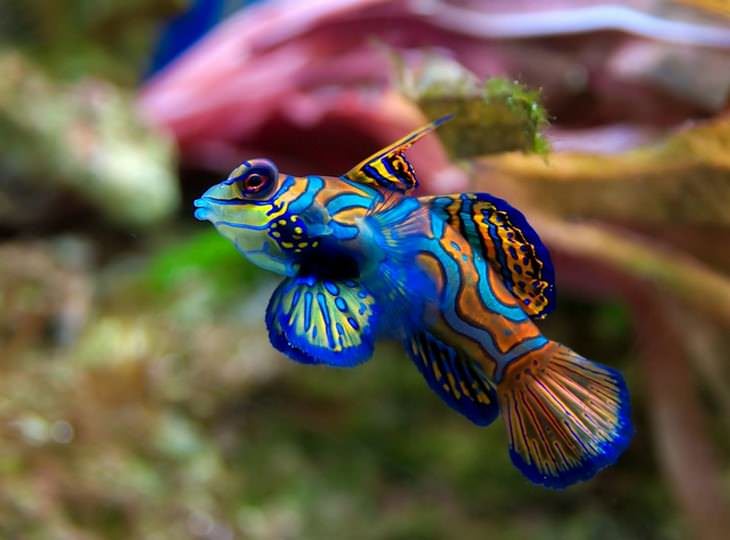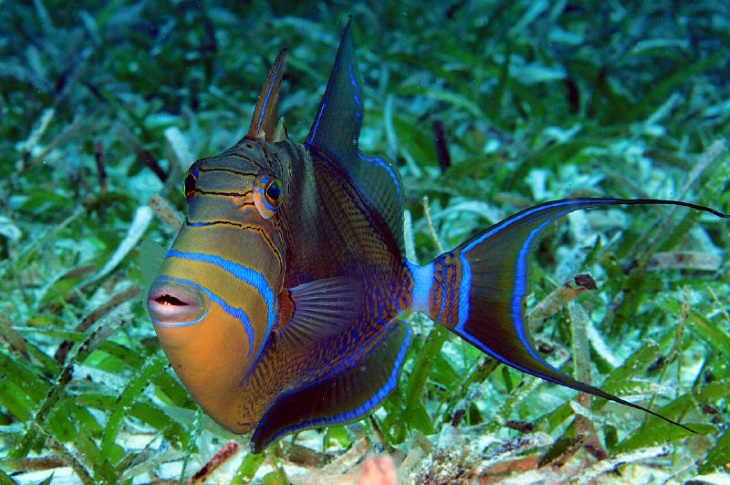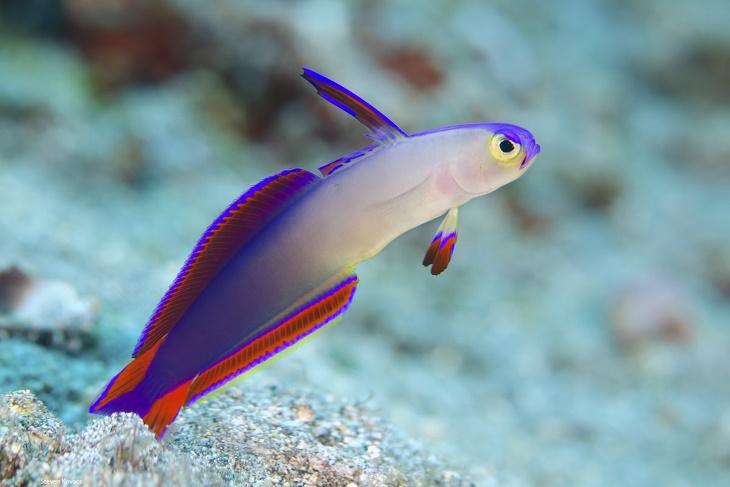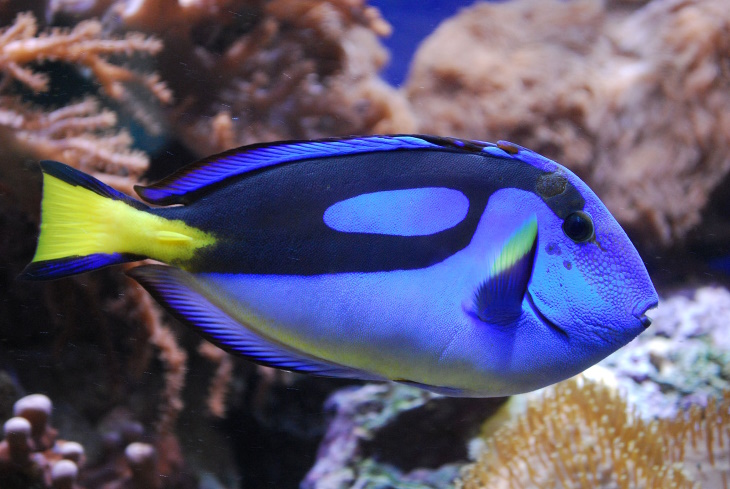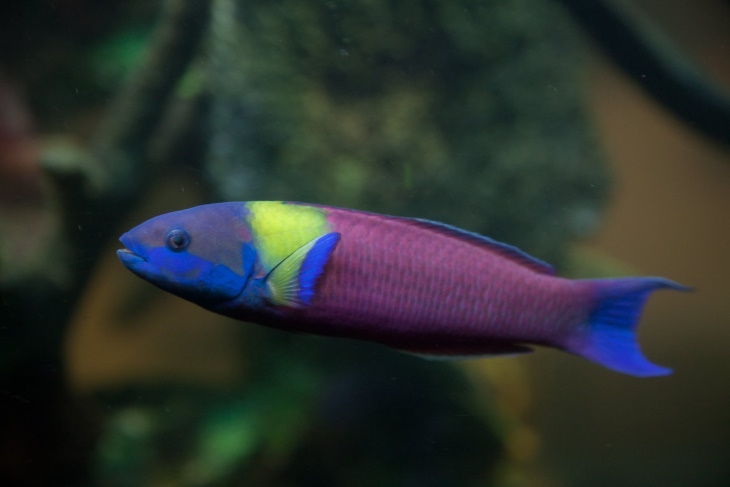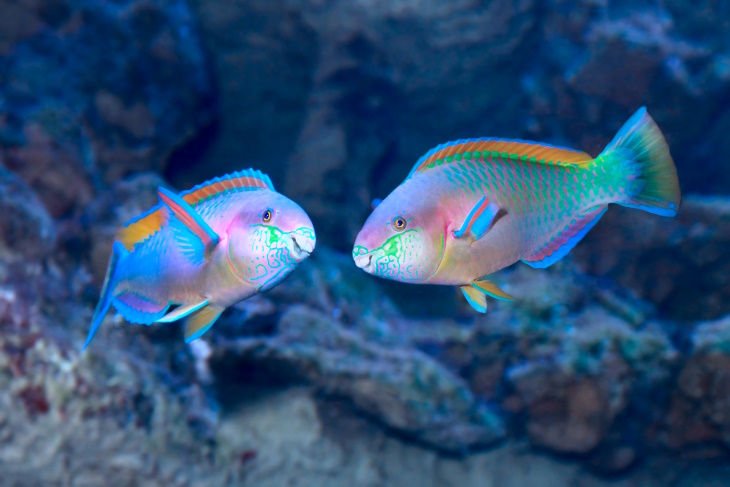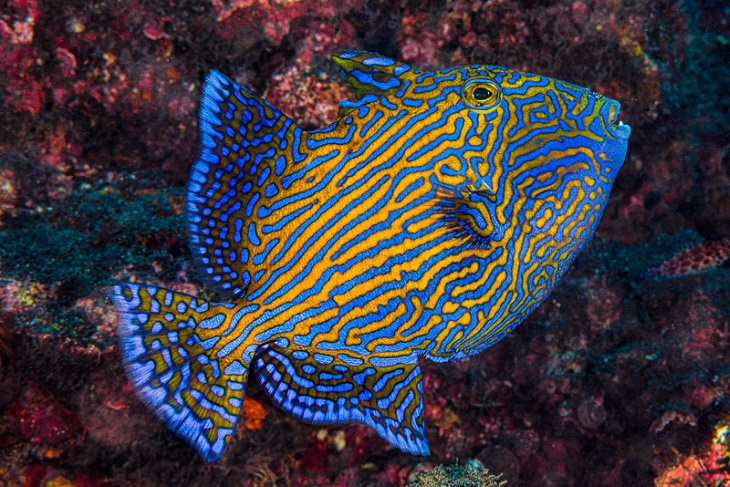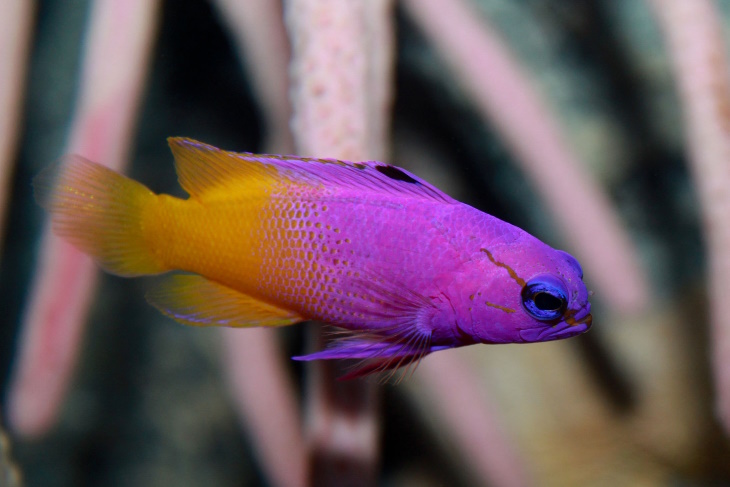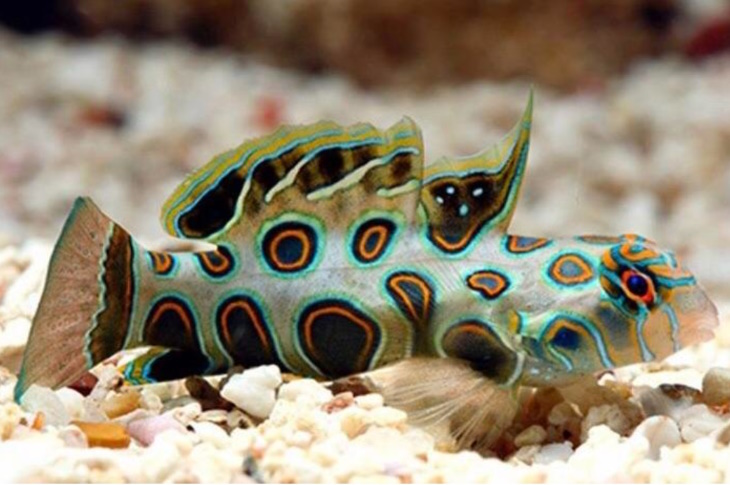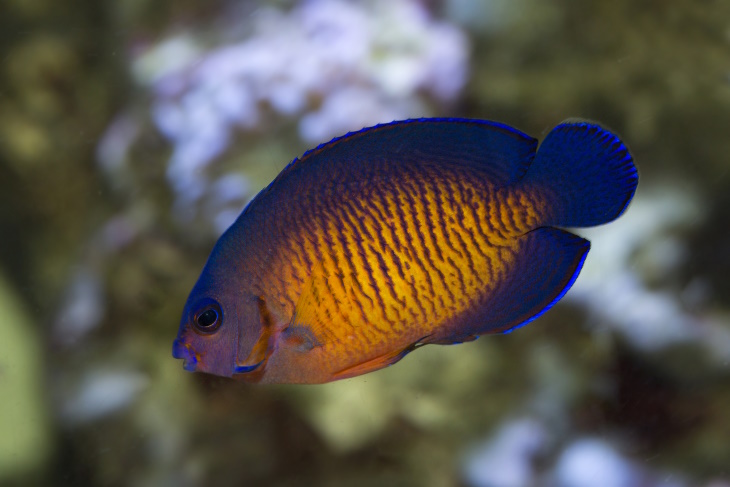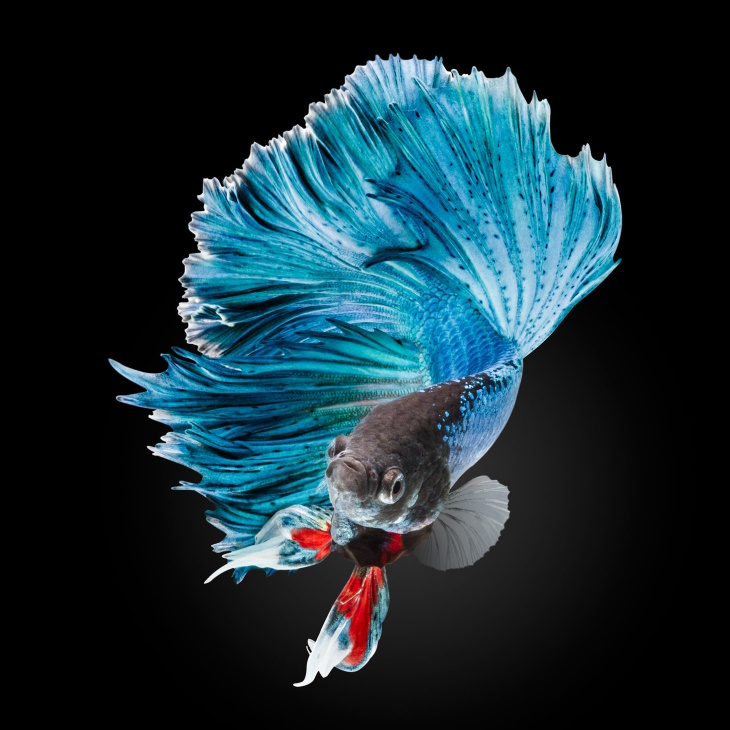
Many of us can remember bringing home a goldfish and watching it swim around in its little fishbowl, mesmerized. Well, with all due respect to the beloved goldfish, the fish below can turn any simple aquarium into a spectacular display of colors and shapes, because these are some of the most beautiful fish in the world! These fish, some of which are extremely rare and can cost tens of thousands of dollars, are found all over the world, and in the following series, you can dive into the mysteries of the sea and watch the breathtaking beauty of nature with each of them.
The Clown Triggerfish is one of the most spectacular fish of the family Balistidae because its body has a magnificent variety of spots in different colors such as black, yellow, white, and light blue. This fish with bright yellow lips prefers to live alone in its territory, meaning that in the vicinity of other fish, especially fish smaller than it, it can be aggressive. In nature, it often lives in the tropics of the Indian and Pacific Oceans and can grow up to 50 centimeters in length.
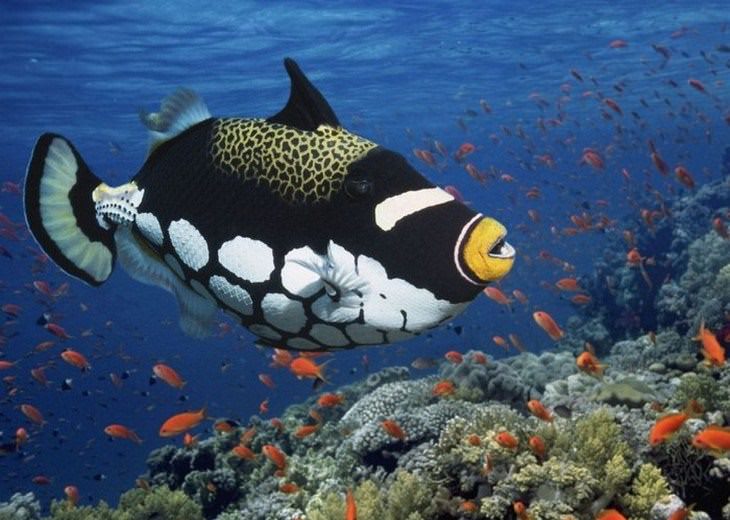
This fish is somewhat reminiscent of the parrot, because of its thick, prominent lips that resemble a beak. With its beak's help, it nibbles on coral reefs, chews the little creatures inside, and spits out the leftovers of the inedible corals, meaning the way it eats isn’t so different from the colored bird. But this isn’t the most impressive thing about this fish, because the amazing colors are what makes it so beautiful. It is considered to be one of the largest aquarium fish, as it can reach a length of up to 1.2 meters.
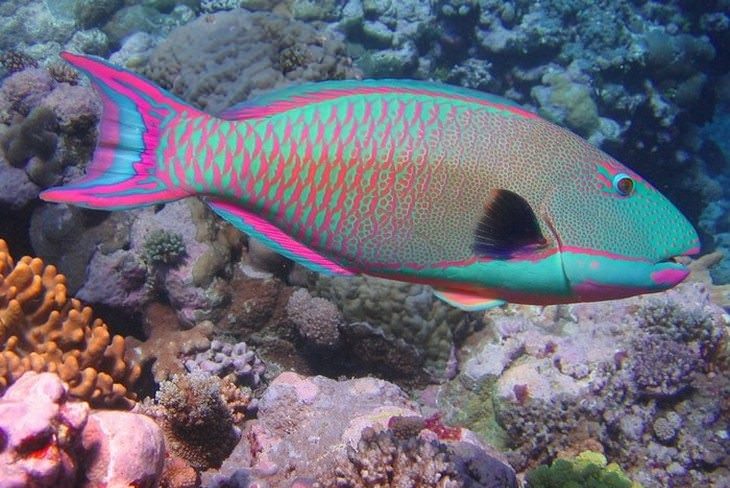
It is not by chance that this fish has been named 'Emperor of the Generation' - it is one of the prettiest fish in the world thanks to the amazing color contrast on its body, which is composed of brilliant blues, dark blues, and whites. But these colors don’t stay that way for their whole life. When the fish reaches adulthood, after about four years, the colors arranged in the rings around its body change and are replaced with strips of yellow and blue, and two back spots around its eyes. This fish is found in various parts of the world near the shores of the Indian Ocean, the Red Sea, and the Gulf of Aqaba.
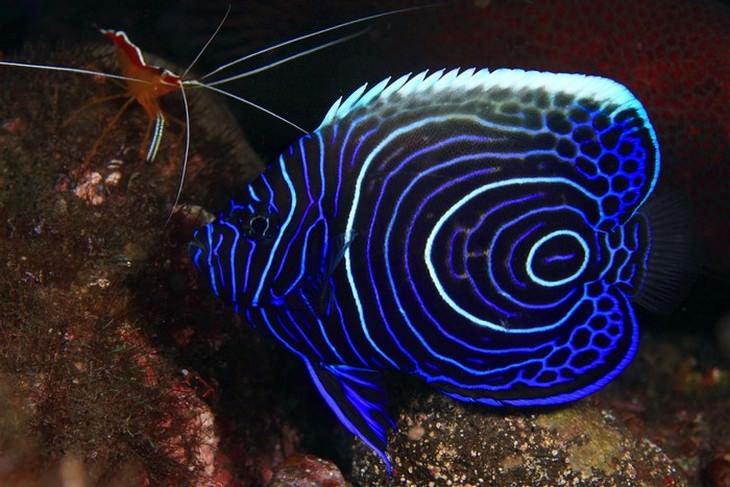
The Picasso Triggerfish, a cousin of the Clown Triggerfish, is also present in the Gulf of Aqaba and other coral reefs along the Indian Ocean. This spectacular fish has an elliptical body, a large head, and a particularly powerful mouth that is designed to break oysters and shells. Although fish are thought to have weak long-term memory, the Picasso and other fish belonging to the Balistidae family can remember and learn from past experiences!
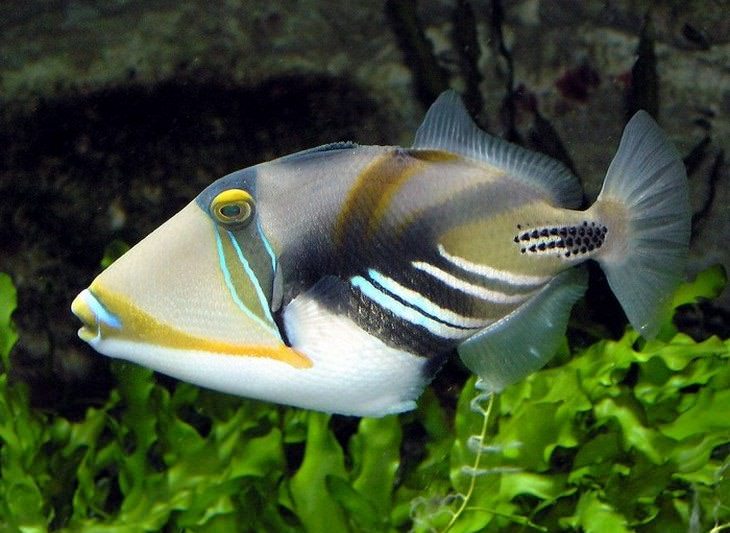
Surprisingly, these impressive fish, with yellow scales that adorn their bodies, are edible and apparently quite tasty, so in some countries, you may find them for sale at fish markets. These fish are found in the Western Atlantic Ocean, as well as in the Caribbean, along the coasts of Mexico and Brazil, and can grow up to 40 centimeters in length.
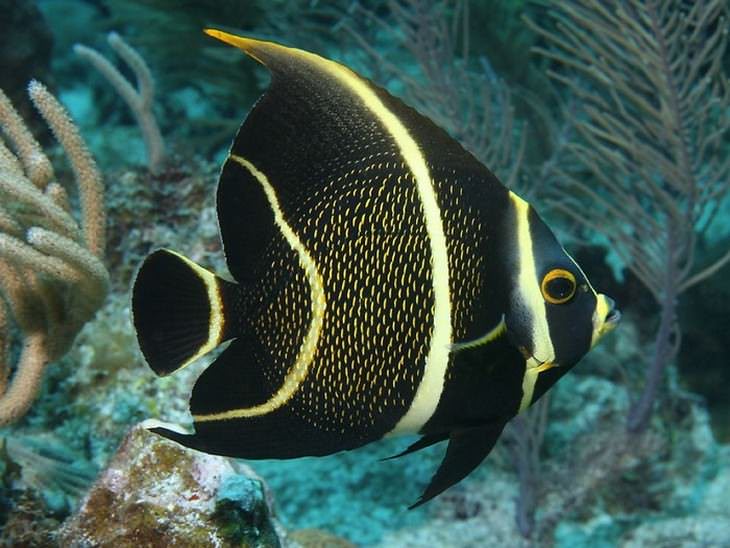
You probably recognize clownfish as the species that stars in the movie Finding Nemo. Although the color palette most commonly associated with this fish is orange, white, and black, there are other colors of clownfish. The small fish, which usually grows up to eight centimeters long, travels in a school, with the dominant female who is responsible for breeding at the top of its hierarchy.
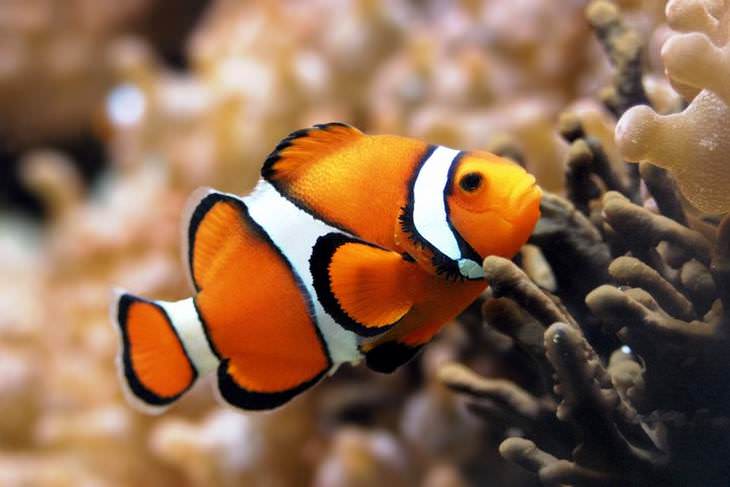
Zebrasomas are best known for their complementary and harmonic colors: the hypnotic blue-purple color on their bodies and the bright yellow color at the tip of their tails make them the world's most sought-after and popular fish. However, these fish are also used as bait, thanks to the strong scent they secrete, which attracts other fish. In their natural environment, they are commonly found in the coral reefs of Japan, East Africa, and the Great Barrier Reef in Australia.
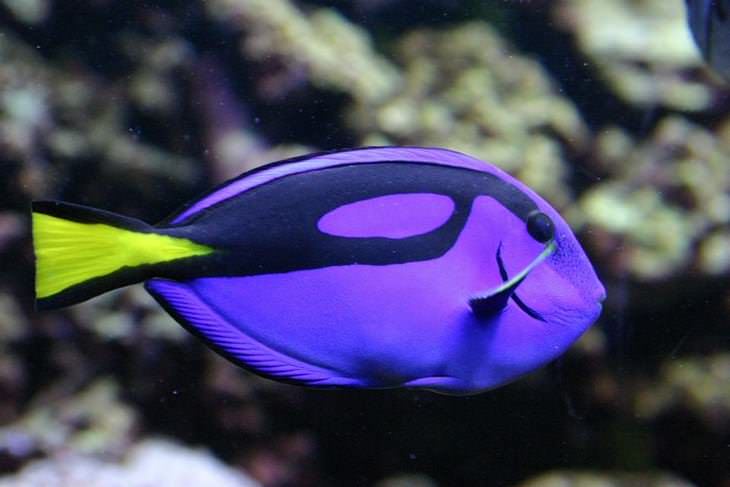
These tiny and unique fish, decorated with long, curly fins, can be found only in one place in their natural habitat, namely the Banggai Islands of Indonesia. Because these fish are so beautiful and rare, they have become a very sought-after variety on the commercial fish market. As a result, and also due to their small initial population, these fish are in serious danger of extinction.

Of the Angel family, this species is the most colorful. It boasts many shades of blue and yellow, with its face, as its name suggests, colored blue. These fish are common in the waters of the Indian and Pacific Oceans, especially in the shallows, and their size is also considered to be relatively large among the nautical fish (up to 35 centimeters). These magnificent fish have an exceptionally long lifespan of about 10 years and are considered to be even-tempered and pleasant. Therefore, they are also popular as domestic ornamental fish.
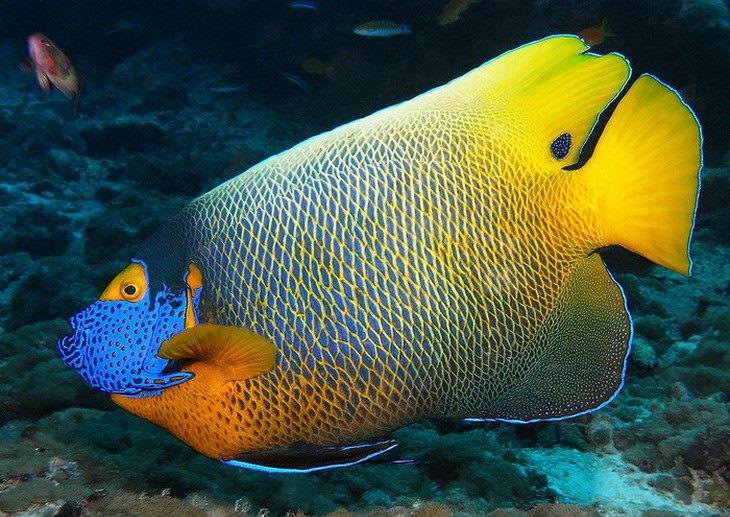
The Idol, with its body as thin as a CD, is common in the Indian Ocean and near Japan and South Africa. The Moorish fish received its name from the African Muslims, also known as Moors, who believed that these fish would spread happiness to everyone on their path. Their beauty has made them a sought-after species among ornamental fish enthusiasts, but because these fish are delicate and sensitive, many of them can’t survive for long in aquarium conditions.
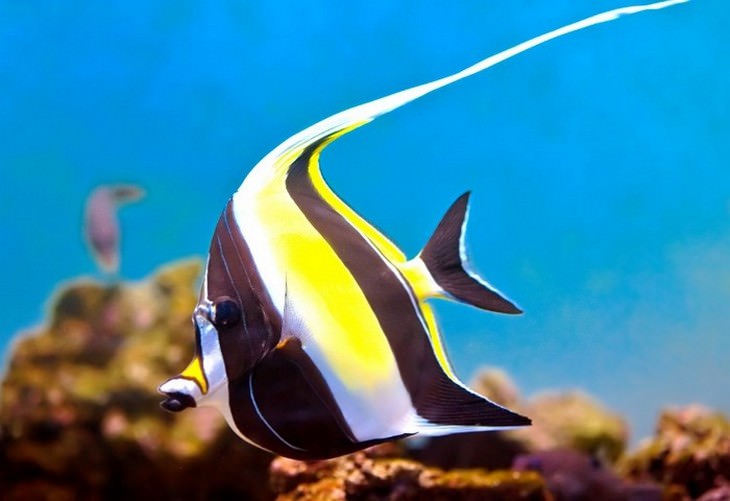
Despite the amusing shape of these fish, pufferfish are among the most dangerous vertebrates in the world. Their thorns are full of a deadly nerve poison called tetrodotoxin. Some species of this fish are found in the Gulf of Aqaba, where the toxicity of the fish is high and therefore they are not hunted or eaten. On the other hand, in some Asian countries (like Japan, China, and Korea), this fish is considered a gourmet food, so many people consume it on a daily basis and put their lives in the hands of chefs who a trained to prepare the deadly delicacy.
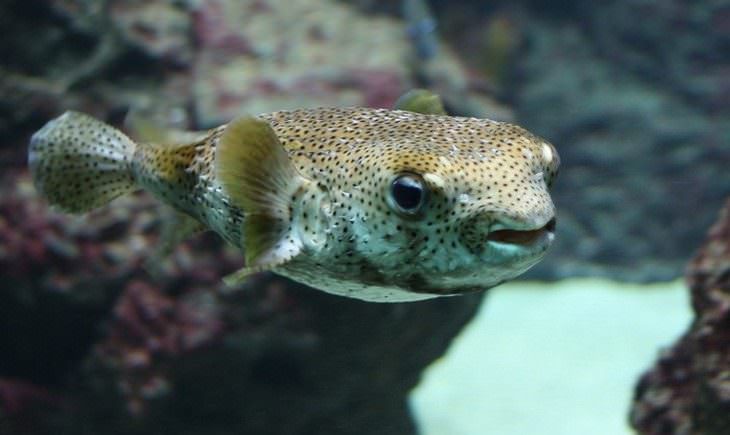
These small and narrow fish, decorated with orange stripes throughout their bodies and black spots on their fins, are mainly found in the Caribbean and Indonesia, but because they are considered a very desirable breed for aquariums, they are artificially grown and traded en masse among the world's ornamental fish enthusiasts, despite their high price tag.
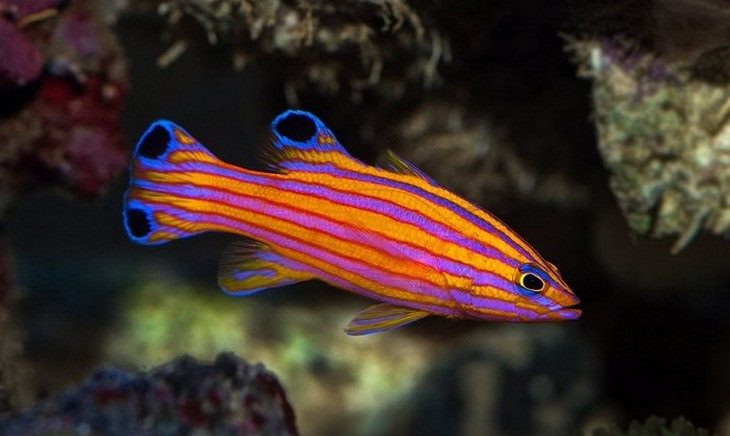
This butterflyfish is a rare ornamental fish with hypnotic silver scales and a bright yellow tail. The price for one can be as high as $2,000. The natural habitat of these small fish, whose maximum size can only reach up to 15 centimeters, is along the coasts of central and southern Japan, in the Western Pacific.
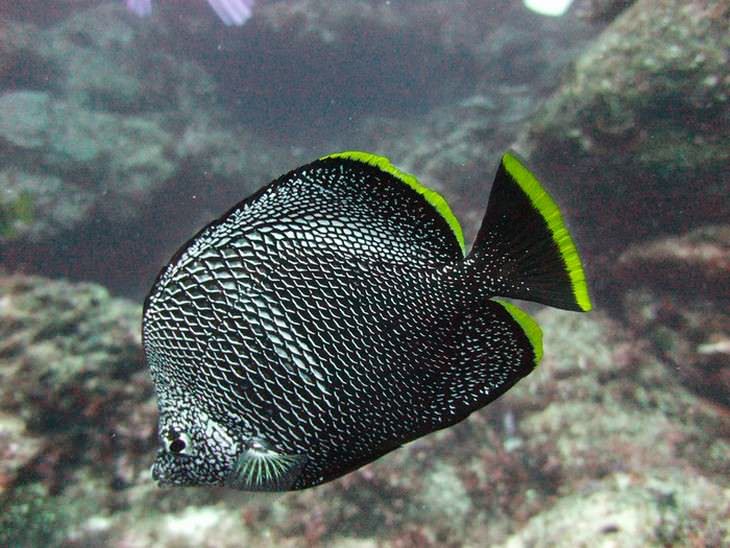
Decorated in bright colors such as purple, blue and green, this beautiful fish is considered one of the most impressive goldfish in the ocean, and is therefore named after gold. The males have a pinkish-red color and a long back fin in the front, whereas the female’s main color is orange with some yellow on their bottom halves. Diving enthusiasts can see this fish, which moves in large schools, in the coral reefs of the Red Sea in Aqaba, Australia, and Japan. This fish ranges between 7-15 cm in length.
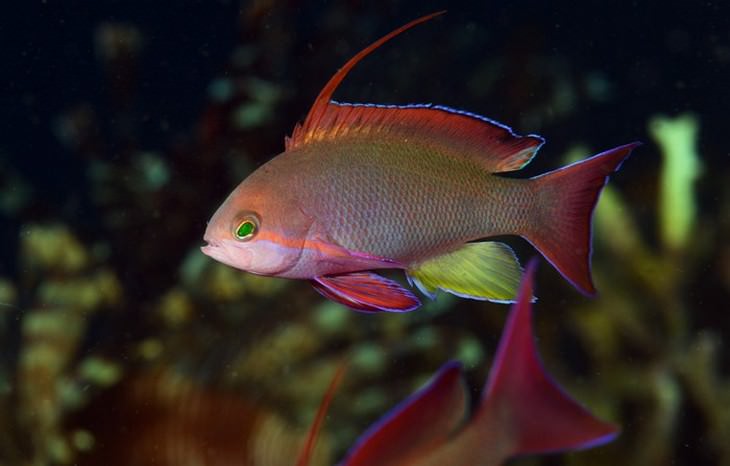
This species is among the smallest ornamental fish you can find, with a body length of up to 5 centimeters. It was first discovered in 1822 in South Asia, near India, Pakistan, and Bangladesh. This fish resides in places with stagnant water or weak currents such as lakes, streams, and brooks. Its bright scales, which look like little reflectors, exist for a reason. Because the visibility conditions in their natural habitat are not good, the fish use their scales to identify their family members.
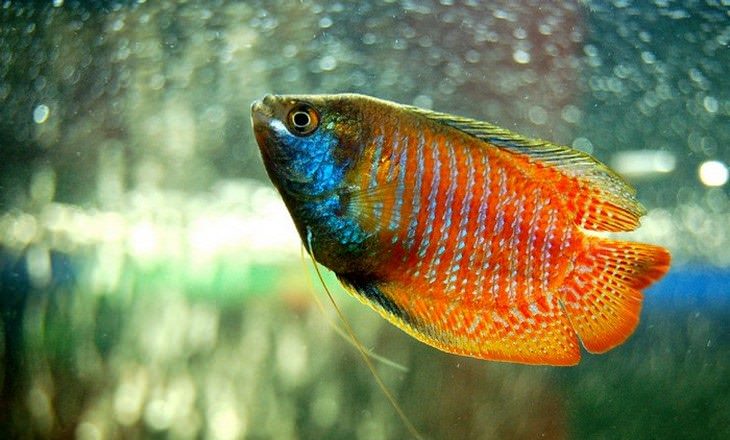
In Brazil's Amazon lives this beautiful fish, which prefers to hide in thick, dense vegetation, making it hard to find. The discus fish, named after its circular shape, is considered a popular commercial species, thanks to its amazing body shape and color, but mainly due to its comfortable and pleasant temper. Discus fish are considered intelligent and sociable and always move in large groups. A mature fish can grow up to 25 centimeters in length.
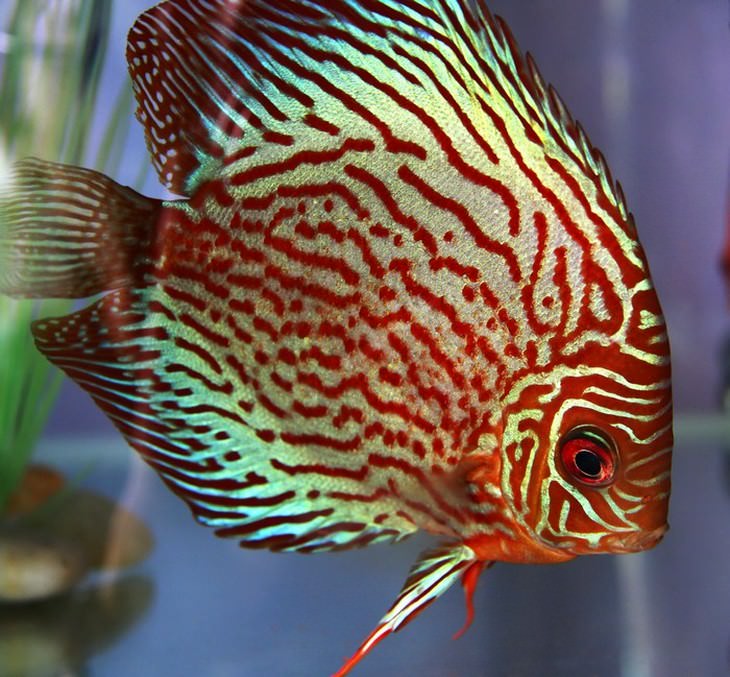
Nestled in the shadows of coral reefs, moving alone and lurking slowly and quietly, the Lionfish is one of the most spectacular but daunting fish among the beautiful creatures living in the ocean. This fish is predatory and belongs to the Scorpaenidae family. Along its body, you will see a large chain of thorns, each wrapped in a colored membrane, like the rest of its body. Each thorn is poisonous and very painful to the touch, though not usually deadly. Various types of Lionfish are found in the Pacific and the Red Sea, and they can grow up to 50 centimeters long.

